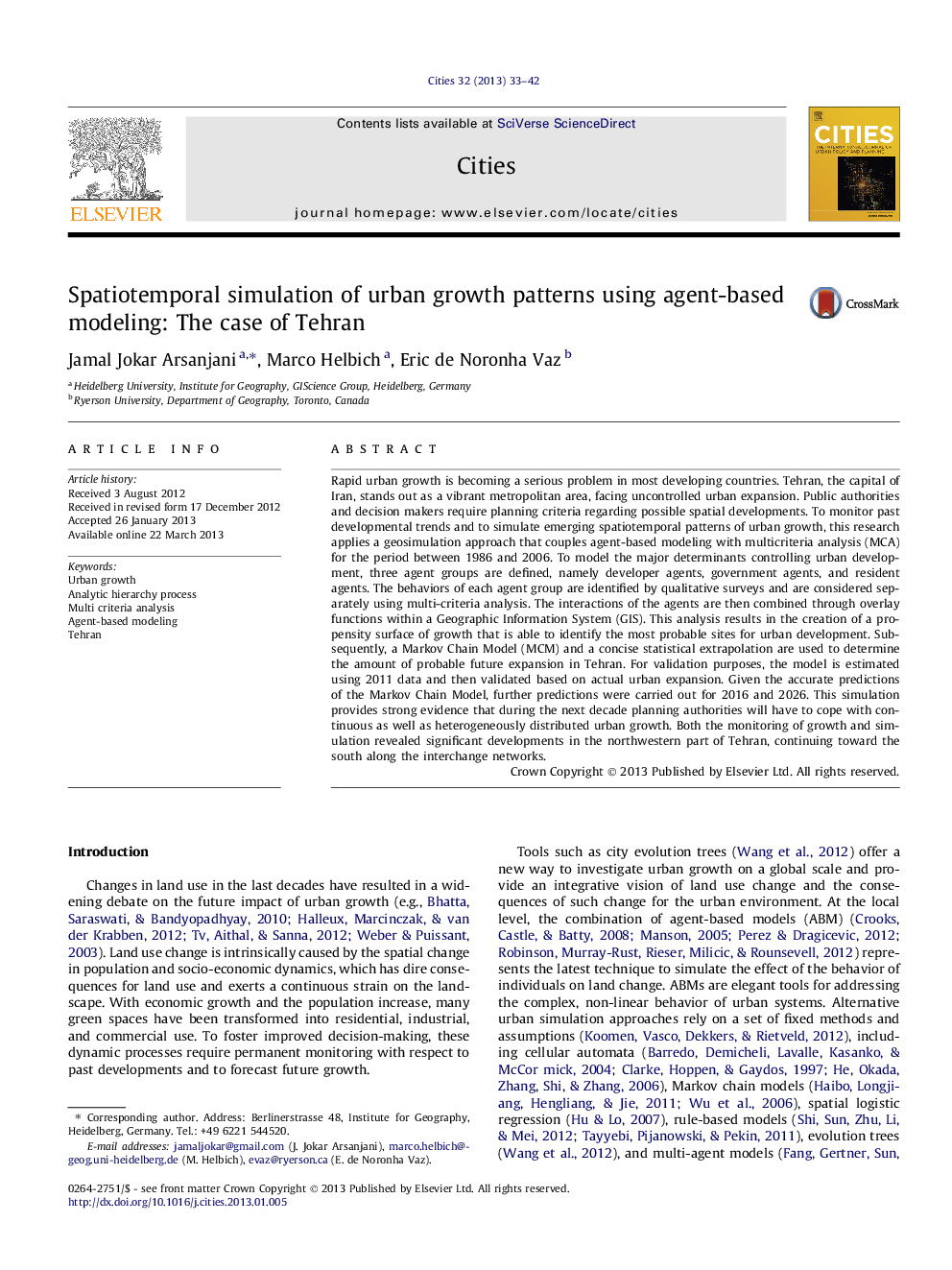| کد مقاله | کد نشریه | سال انتشار | مقاله انگلیسی | نسخه تمام متن |
|---|---|---|---|---|
| 1008411 | 1482362 | 2013 | 10 صفحه PDF | دانلود رایگان |

Rapid urban growth is becoming a serious problem in most developing countries. Tehran, the capital of Iran, stands out as a vibrant metropolitan area, facing uncontrolled urban expansion. Public authorities and decision makers require planning criteria regarding possible spatial developments. To monitor past developmental trends and to simulate emerging spatiotemporal patterns of urban growth, this research applies a geosimulation approach that couples agent-based modeling with multicriteria analysis (MCA) for the period between 1986 and 2006. To model the major determinants controlling urban development, three agent groups are defined, namely developer agents, government agents, and resident agents. The behaviors of each agent group are identified by qualitative surveys and are considered separately using multi-criteria analysis. The interactions of the agents are then combined through overlay functions within a Geographic Information System (GIS). This analysis results in the creation of a propensity surface of growth that is able to identify the most probable sites for urban development. Subsequently, a Markov Chain Model (MCM) and a concise statistical extrapolation are used to determine the amount of probable future expansion in Tehran. For validation purposes, the model is estimated using 2011 data and then validated based on actual urban expansion. Given the accurate predictions of the Markov Chain Model, further predictions were carried out for 2016 and 2026. This simulation provides strong evidence that during the next decade planning authorities will have to cope with continuous as well as heterogeneously distributed urban growth. Both the monitoring of growth and simulation revealed significant developments in the northwestern part of Tehran, continuing toward the south along the interchange networks.
Figure optionsDownload as PowerPoint slideHighlights
► We simulate urban growth in the Tehran metropolitan area.
► We design an integrated ABM-Markov chain model approach to model urban growth.
► We test two dissimilar approaches to quantify growth.
► We validate the most suitable approach for quantifying change.
► We simulate future growth in the study area up to 2026.
Journal: Cities - Volume 32, June 2013, Pages 33–42